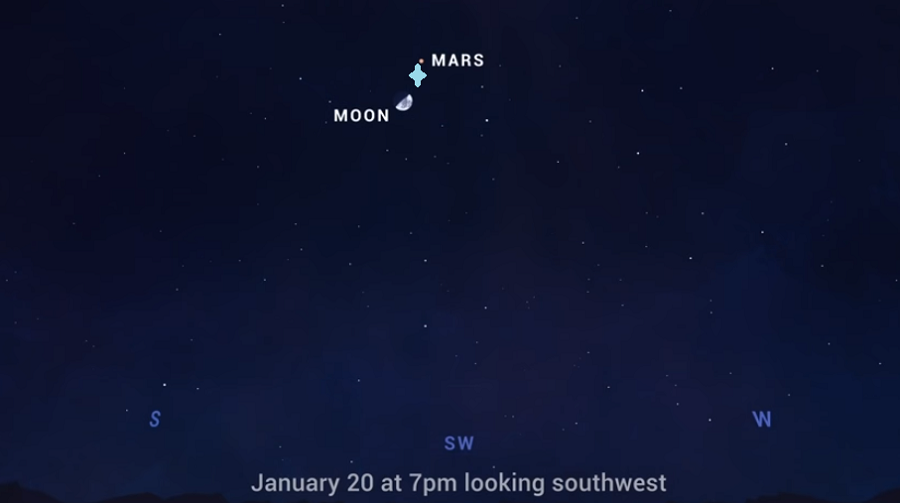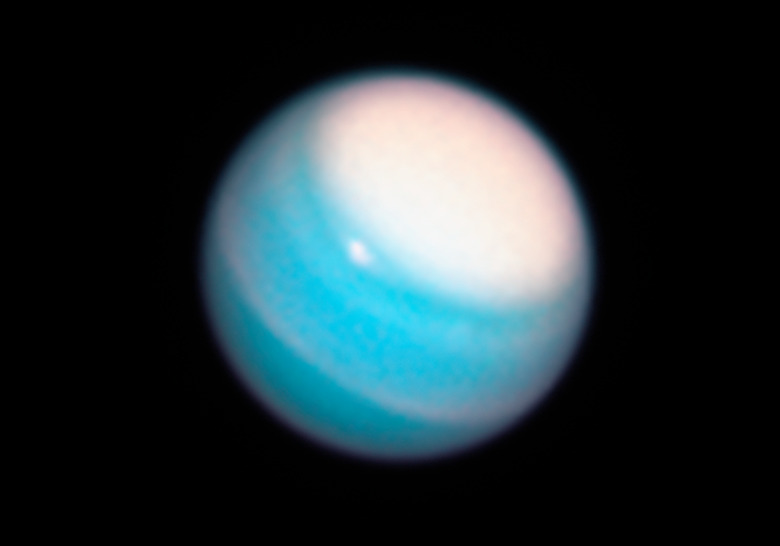Want To Catch A Glimpse Of Uranus? It'll Be Very Easy Tonight
- Uranus isn't the easiest planet to spot in the night sky, and most of the time we can't see it at all, but tonight it'll be a bit easier to spot the distant, frosty world.
- NASA says that Uranus will be near Mars in the night sky, and if you have something like a nice pair of binoculars or, better yet, a telescope, you should be able to see it.
- The planet, which is a pale blue and white, will appear tiny at such a distance, but it's actually nearly 15 times more massive than Earth.
When you gaze up at the night sky you see plenty of stars, but can you pick out planets when you see them? Sometimes it's possible to spot the likes of Jupiter and Mars without a telescope, but more often than not, folks with "average" eyes can't tell much of a difference. Tonight, however, you might be able to catch a glimpse of Uranus, and all you should need is a decent pair of binoculars.
Uranus huge, blue, and stinky. It's also one of the most interesting planets in our system, and it's not often that we have guideposts in the sky in order to see it. This time around, Uranus will appear close to Mars in the sky, making it a bit easier to spot, especially if you have the hardware to zoom in a little closer.
Tonight, Uranus will appear between our own Moon and Mars in the sky. It'll be tiny and very faint, but it'll be there, shining a pale blue and just waiting for someone to come visit in search of life.
"The distant, outer planet Uranus is too faint for most of us to see with the unaided eye, and it can be tough to locate in the sky without a computer-guided telescope," NASA explains in its weekly skywatching tips post. "But Uranus can be located now right between the Moon and Mars."

Uranus is strange and special for a variety of reasons. It's very cold, which isn't particularly unusual, but the planet happens to rotate on a 90-degree angle compared to the rest of the planets in our system. The theory is that something huge slammed into Uranus a long time ago, causing it to shift and ultimately rotate at an angle that doesn't match up with its own orbit around the Sun.
Additionally, the planet's moons have been of interest to scientists for some time, mainly because they're thought to be covered in ice that may hide liquid water beneath it. If that's the case, those moons could harbor life in some form, but we wouldn't know for sure until we actually went and checked it out.
In any case, Uranus will be in the sky tonight, and if you have a pair of binoculars or a telescope, you'll have a great shot at seeing it. Assuming the weather cooperates, of course.
